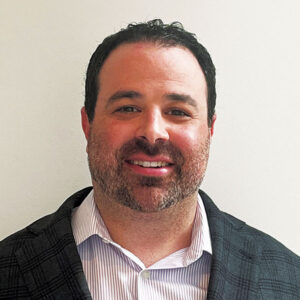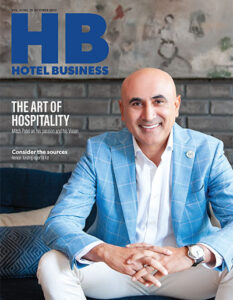Hotel Business caught up with Nick Barbaria, president, Arriba Capital; Mat Crosswy, president, Stonehill; Vipul Patel, principal, Hotel Capital Markets; and Lori Tirado, managing director, head of business development, Access Point Financial, to discuss how their companies are dealing with current challenges and what’s in store for next year.
—Adam Perkowsky
How has business been this year?
Barbaria: This has been our best year ever in regard to the number of closed loans.
Crosswy: Given the volatility in the market right now, Stonehill has been very active and expects to complete roughly $1 billion in transactions this year. The biggest challenge today is being able to price deals with the appropriate risk as real estate value changes coupled with ongoing rate movements.
Patel: We have had another successful year so far, and the business continues to stay healthy with a pipeline of acquisitions and construction projects. We have had numerous closings completed already in the first three quarters, and are getting additional term sheets signed on for closings scheduled by the end of the year. Thankfully, there are lenders that have been diligent and quietly optimistic about lodging, and we’re glad we can help our clients in finding success through our strong relationships with these types of sources.
Tirado: This year has been quite interesting and has ebbed and flowed based upon various factors, such as the war in Europe, inflation, rising interest rates and subsequent market adjustments, as well as general volatility in the market. The start of the year was very strong and peaked at the end of May. It then slowed a bit during early summer and picked up again just before Labor Day. Rising rates in particular have impacted deal economics, and some deals that worked just a few months ago now require more equity to be viable in today’s economic climate. We anticipate financing by year-end to be somewhere around $850 million, which is still considerably better than last year.
Has the lending landscape returned to some sense of normality? Why or why not?
Barbaria: We are not dealing with pandemic-related issues anymore; however, now we are just dealing with higher rates.
Crosswy: No. The commercial mortgage-backed security (CMBS), collateralized loan obligation (CLO) and single-asset, single-borrower (SASB) markets have pulled out, creating more illiquidity. Fortunately, Stonehill continues to execute deals on the balance sheet without having to securitize its positions. Also, the higher-interest-rate environment is intensifying the consequences of covenant requirements.
Patel: The lending landscape’s return to normalcy is obfuscated by a series of unrelated market and geopolitical risk forces, which have and will continue to create some uncertainty through the near future. While lenders remain cautious and liquidity is strong, the appetite for hotels amongst debt investors is expected to remain strong for the right assets, albeit risk-adjusted.
Tirado: Earlier in the year, it seemed like the lending landscape has returned to normal. However, there are too many external factors now that are impacting the capital markets, which is leading to many lenders returning to the sidelines. We are still seeing some competition from regional banks, life insurance companies and some debt funds for the right deals (strong brand, sponsorship and market).
What has gotten a lot of play: fixed rate, floating rate, mezz, other types of debt? And for what?
Barbaria: We consistently do a lot of ground-up construction. Earlier in the year, we were doing a lot of floating-rate acquisition and renovation deals before rates skyrocketed. Now, we are doing shorter-term, five-year fixed-rate deals to lock in before rates go any higher. We have to pivot with the market.
Crosswy: Our deals, as they have historically been, are floating rate, value-add bridge loans. We anticipate that to continue for the foreseeable future.
Patel: The floating rate has been more coveted by many as of late, especially after recent rate hikes this year and anticipated interest-rate volatility over the near future. Our clients have also benefited strongly from hybrid capital stacks (e.g., floating or fixed + PACE) to some fairly sizeable projects, namely ground-ups or redevelopments.
Tirado: As the year has gone on, we have seen a shift from our clients who previously wanted floating rate debt only now being more interested in the fixed-rate bridge product. That has become much more attractive based upon where rates have gone since January.
How do you see the rest of the year, and into 2023, play out?
Barbaria: There are some headwinds with higher rates, but we will finish the year strong and that momentum will carry us into 2023.
Crosswy: For 2022, we have had strong quarters with an expectation that, in Q4, we will be more selective on our deals given the disruption in the market. We are preparing for a highly active 2023 with preserving cash to execute in a continued inefficient market.
Patel: Given the significance of investment liquidity seeking real assets such as lodging, hotels, casinos and resorts, valuations should continue to fare strongly for stable assets with strong demand bases. We expect hotel transactions to continue to gain momentum into 2023, and we are also working with hotel owners and investors early on to assess their refinance options ahead of their upcoming maturity dates. Given the wall of maturities also expected in 2023, we seek to continue to be a resource as these assets will require refinancing.
Tirado: Only time will tell if we see the flood of distressed debt that we expected during the pandemic. We thought it was coming then and it didn’t, so will it this time? I wish I had a crystal ball. I will remain optimistic and say that I think we will continue to see requests for bridge loans, specifically from the many CMBS loans that are maturing from early to the middle of next year that need a lender to step in and refinance the debt.





